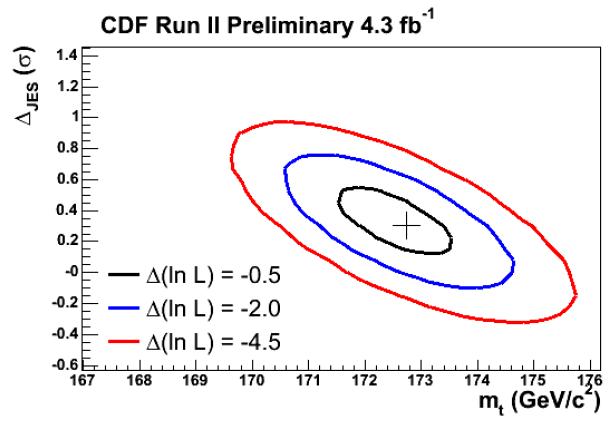The CDF experiments collects proton-antiproton collisions delivered by the Tevatron collider, which imparts the projectiles with 1 TeV of energy each, for a center-of-mass energy of 2 TeV. This is still the highest energy ever achieved by a collider, although the record is going to be soon stripped off Fermilab by the Large Hadron Collider, which is due to start colliding protons with other protons at 7 TeV of energy this coming fall.
CDF collected 630 top pair candidates from 4.3 inverse femtobarns of collisions (about 300 trillions of them) in the "single lepton" decay topology: events must have a leptonic W boson decay (
Jet energies are the least well determined quantities in the top decay, and an imprecise calibration is the largest source of systematic uncertainty: by fitting for both quantities together the uncertainty in the top quark mass is minimized, through the use of a two-dimensional likelihood function.

The figure shows the two quantities determined together as contours of equal probability. The top mass is measured as
This is a less than percent uncertainty, and the best result in the World.
Kudos to my colleagues in CDF for this new stellar result! And kudos to old members of CDF like me, who using merely 7 candidates measured the top mass for the first time back in 1994 as 174 GeV, a measurement which is amazingly still less than one standard deviation away from the most credited numbers!



Comments